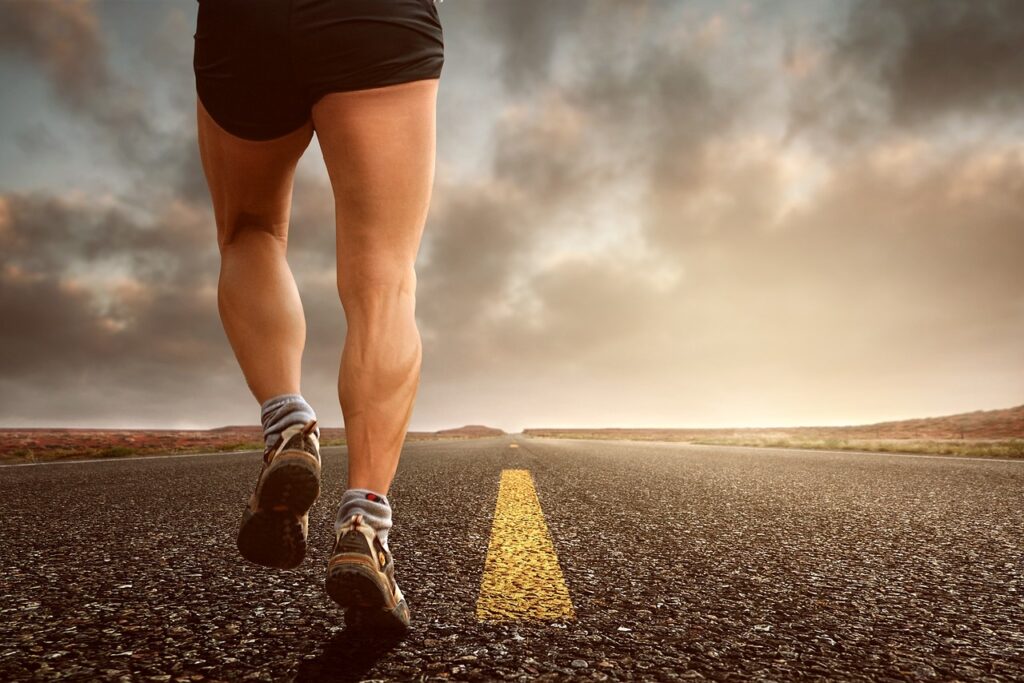Introduction Bodyweight Leg Exercises 2
Bodyweight Leg Exercises 2. Bodyweight training is a popular and accessible method of improving your strength and conditioning with minimal to no equipment. So then, when it comes to building stronger legs. Here, bodyweight training offers you a variety of options to target the muscles in your lower body.
Sitting is the New Smoking
Bodyweight Leg Exercises 2. “Sitting is the new smoking” — have you heard this expression yet? This line seems to be all over the media lately, and rightfully so. According to a January 2015 study published in the journal Annals of Internal Medicine, sedentary time is associated with higher risk for certain diseases, mortality and hospitalization in adults. This is quite alarming, considering anyone with a computer desk job or ride share job (like Uber or Lyft) spends the majority of their waking hours sitting. Consequently, older adults who are weakened by age, make long periods of sitting, a serious threat to health and longevity.
Your Legs
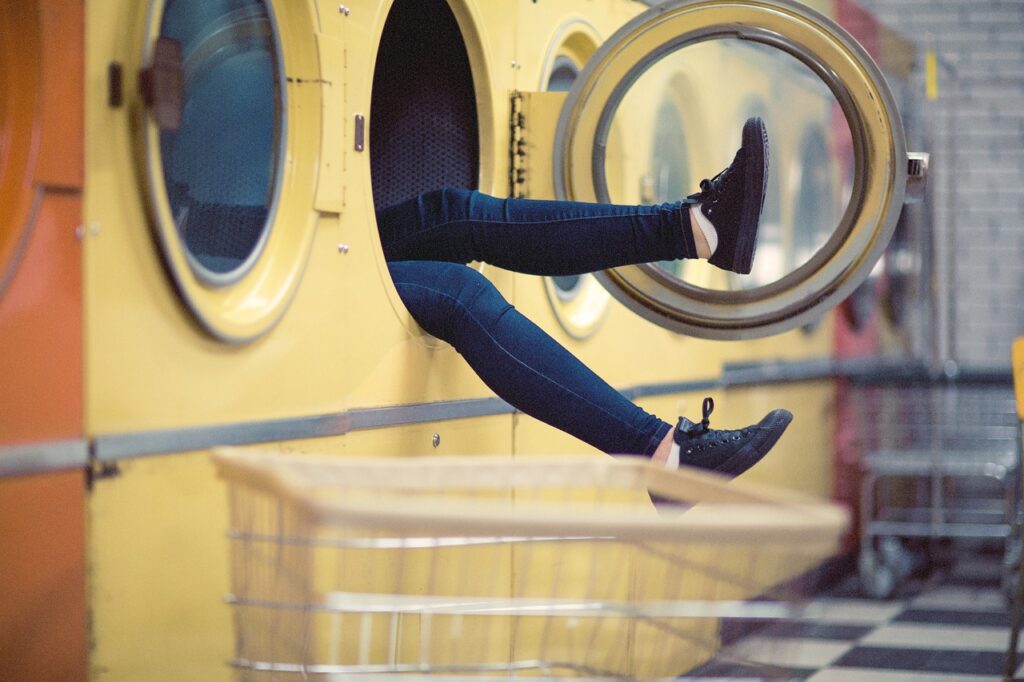
Bodyweight Leg Exercises 2. Your legs are your largest muscle group. Because they support you and keep you moving, essentially, they’re the foundation of your body. However, as you get older, you start to lose muscle and flexibility. Also, this might be a result of decreased activity or joint disorders. But to keep your legs strong and avoid losing too much muscle as you age. Hence, you need to do more than just walk. Because it’s important to incorporate strength training and functional movements into your workouts. So you can maintain or increase muscle mass, improve balance, and coordination, and decrease any joint pain.
Marching on the Spot
The good news is that marching in place is considered low-impact exercise and it does help burn calories, especially for people who have obesity.
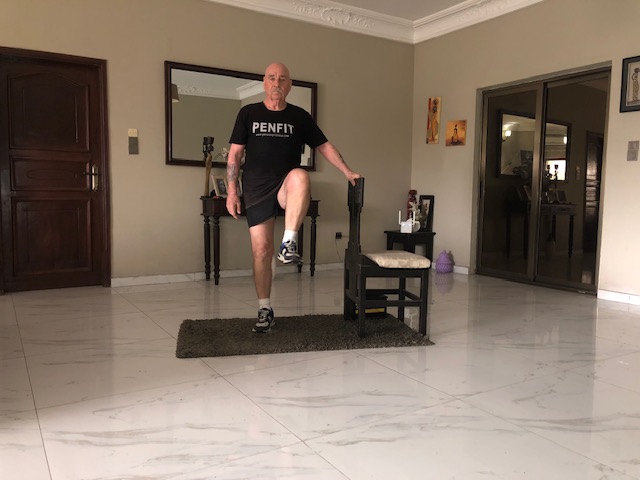
Muscles Exercised, quadriceps, glutes, calves, hamstrings, hip flexors
How To Do It
- Stand with a chair in front of you and a wall behind you. If you begin to fall, you may use them for support. Standing in a corner will also work.
- Stand with your feet slightly apart (as you normally stand) and your arms at your side.
- March in place, lifting your knees high toward the ceiling.
- Do this for 30 seconds.
Assisted Squats
A simple bodyweight squat uses almost every muscle in the core and lower body.
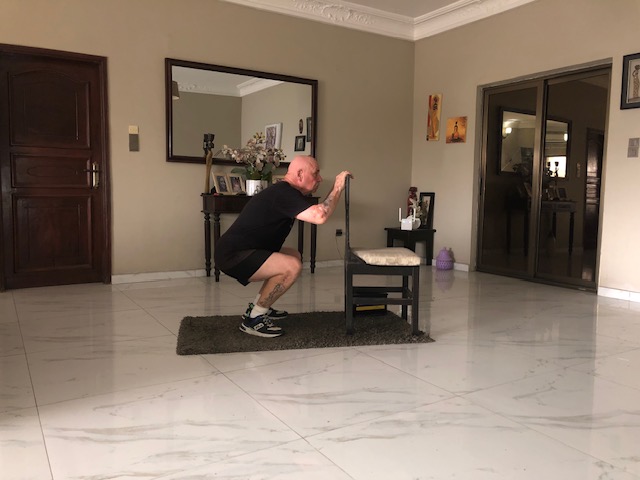
Muscles Exercised, Every leg muscle, Hips, Back, Core, Shoulders, Arms.
How To Do It
- Stand with your feet slightly wider than your hips.
- Your toes should be pointed slightly outward – about 5 to 20 degrees outward Look straight ahead and pick a spot on the wall in front of you.
- Look at this spot the entire time you squat, not looking down at the floor or up at the ceiling.
- Hinge It’s important to start with your hips back, and not by bending your knees.
- Squat down until your hip joint is lower than your knees, Once at the bottom, it’s time to stand back up from your squat:
- Keeping everything tight, breathe out and drive through your heels, keep the balls of your feet and heels on the ground as you rise to the start position.
- Squat 10 times as 1 set, try to do 3 sets or whatever you can manage.
Assisted Lunges
Lunges are important for both strengthening and injury prevention. They’re a functional exercise that works multiple muscles across the hips, knees, and ankle joints at the same time. They also challenge core stability in unilateral movement patterns.
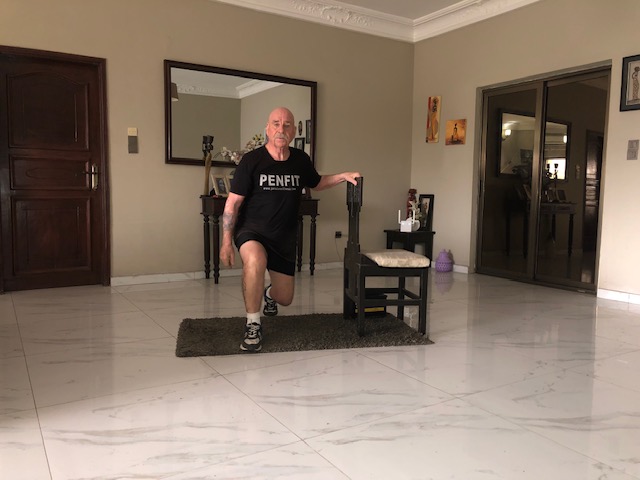
Muscles Exercised, the quadriceps, the gluteals, the hamstrings, the calves, the transverse abdominis, the obliques, the multifidus, the erector spinae
How To Do It
- Start in a standing position with your feet hip-width apart.
- Step forward longer than a walking stride so one leg is ahead of your torso and the other is behind. Your foot should land flat and remain flat while it’s on the ground. Your rear heel will rise off of the ground.
- Bend your knees to approximately 90 degrees as you lower yourself. Remember to keep your trunk upright and core engaged.
- Then, forcefully push off from your front leg to return to the starting position.
- Lunge 10 times on each leg as 1 set try to do 3 sets or whatever you can manage.
Step Ups
The step-up is an exercise that requires an elevated surface around 6–12 inches (15–30.5 cm) high. A basic set of stairs will work just fine. However, step-ups can be used as both a strength and cardiovascular training exercise.
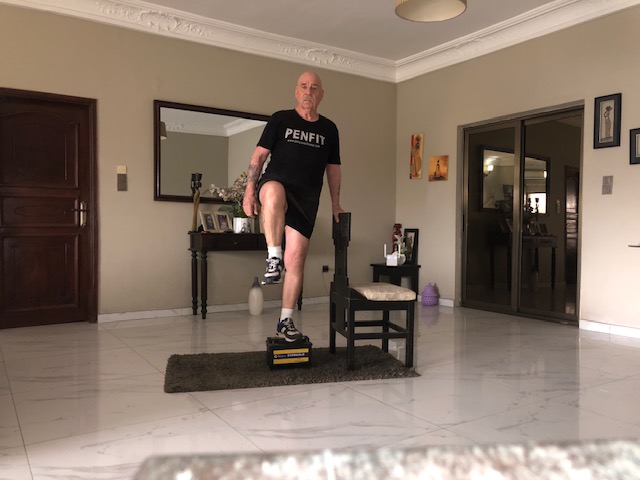
Muscles Exercised, quadriceps, glutes, hamstrings and your core.
How To Do It
- Stand with your feet hip-width apart with a 6–12 inch (15–30.5 cm) high stepping surface in front of you.
- Take a step and place your front foot on the surface.
- Push through your front foot and fully extend through your knee and ankle to stand up straight on the step.
- Raise your other knee until your thigh is parallel to the floor. Do not place your back foot on the step.
- Return your back foot to the original position and step your front foot (the one on the elevated surface) back to the starting position.
- Alternate sides or repeat on the same side for the target number of repetitions.
- Sep Up 10 times on each leg as 1 set, try to do 3 sets or whatever you can manage.
Video
Donate, All donations go towards the upkeep and improvement of Pensioner Fitness
Pensioner Fitness Awards
THE BUSINESS CONCEPT, BEST IN BUSINESS AWARDS 2023
MOST INSPIRING SENIOR WELLNESS WEBSITE 2023
THE GLOBAL HEALTH AND PHARMA, FITNESS AND NUTRITION AWARDS 2023
BEST SENIOR FITNESS AND NUTRITION SPECIALIST 2023
In Conclusion
Bodyweight leg training is a great way to add functional fitness and train vital movement patterns with limited equipment. Also, the squat and lunge patterns are the primary movements available for serious bodyweight leg exercises. In addition, movements can be added to your program to increase variety, warm up, and improve mobility. However, you can manipulate bodyweight exercise routines to focus on different fitness goals, such as strength or conditioning. But in the long run, external resistance is needed to continually improve strength. In this case, these exercises can be done anywhere, anytime. By doing these exercises you can build stronger legs and better stability, This aids mobility, fall prevention and longevity.
Important Note *
Remember that everyone is different, it is ultimately YOUR RESPONSIBILITY to find what your body responds to. So please do your due diligence before trying anything new, including getting Medical Advice to ensure your safety and peace of mind.
Connect with me and leave a comment or two on my
